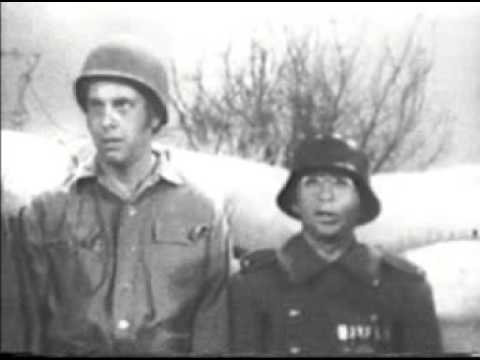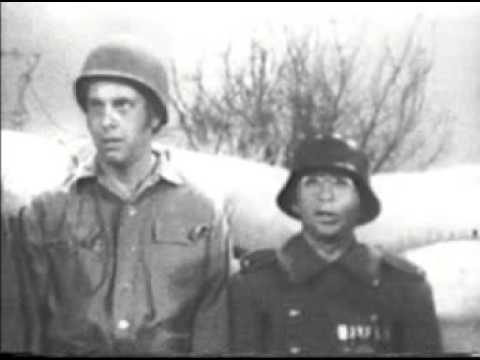

“Rowan & Martin’s Laugh In”…Three Backstories Rolled Into One
“Rowan & Martin’s Laugh In”…Three Backstories Rolled Into One
(1) Fun (2) Editing on film and videotape (3) The Editor, Art “Jump Cut” Schneider
There is not a better way to illustrate how “Laugh In” was done than to start with this embedded blooper reel, which will be fun and instructive at the same time. As you watch these outtakes on kinescope film, notice the man in the at 1:25 mark with Marcel Marceau (the pantomime king) is the show’s creator George Schlatter.
Believe it or not, the show was simultaneously recorded on black and white kinescope film and color video tape. Using the kinescope footage, Art Schneider (the videotape editor) and George Schlatter cut the show together the way they wanted it to be seen on the air. Only when that process was complete could Art begin to edit the color videotape.
With an average of 400 edits per episode, which no other show had ever attempted, editing “Laugh In” was in a league by itself…as was the editor. As a matter of fact, when Art left NBC after the second year of the show, it took 7 editors to replace him.
To give you and idea how hard it was to edit videotape in those days, here is Art Schneider editing with a Smith Block at NBC. The video will start at the part that features Art, but the whole thing is very good.
Below is a 1989 article from “WRAP Magazine” on Art…
For Art Schneider, A.C.E., it was one of the most memorable moments in his life. Bob Hope was taping a 1965 comedy special
at NBC and Schneider, Hope’s videotape editor since the late 1950s, was standing offstage when Hope called him out. “Most of you don’t know what goes on behind the scenes during the editing of our show,” began Hope. “We have a man in the basement … who fixes all our mistakes, and we’d like to honor him tonight with the annual Bob Hope Show Crossed Scissors Award for Jump Cutting Above and Beyond the Call of Duty”.
To many in the industry, Schneider has always been known as “Jump Cut,” the editor’s editor, racking up screen credits and awards almost since the beginning of television. As an NBC staff engineer from 1951 to 1968, Schneider edited over 500 variety shows, documentaries, music specials, series and news programs, winning four Emmys in the process. His work helped define the medium.
From the start, Schneider’s modus operandi has been to edit quickly, efficiently and seamlessly. To improve video editing in the ’50s-a cumbersome process, which involved the hand-splicing of tape, he worked with his colleagues at NBC to develop the first offline editing process as well as an early time-code system. As chief editor of the network’s “Rowan and Martin’s Laugh In” in the late ’60s, he was notorious for his organization and imagination.
“To edit ‘Laugh In’, we had to adapt the technology to our concepts and not vice versa,” says Creator and Producer George Schlatter. “At the time, video editing was primitive and considered a technician’s job. Art helped change that. It became an artistic job.”
Schneider’s ambitions once lay elsewhere. When he was 18 and a model-airplane enthusiast, he entered the University of Southern California with the goal of becoming an aeronautical engineer. He explains, however, that he couldn’t master the math required for the field. “I changed my major three times before I finally settled on cinema studies,” he recalls. “There’s not much math in that.”
Schneider soon found he had a knack for cutting film, and it was during his senior year that a professor introduced him to an NBC executive searching for a film editor. “The job they offered was simple-editing leaders onto kinescopes, but they didn’t want to spend the time training beginners how to edit,” recalls Schneider. “They wanted someone who already knew how to do it.”
A four-hour job interview led to what would be a 17-year career at the network. Although eventually he became the network’s supervising editor, he began as a “Group 2 Engineer”, hand splicing videotape and film, and operating kinescope machines and cameras because the term “editor” was not officially sanctioned by NBC until the ’60s.
Schneider worked constantly, averaging 40 to 50 shows a year and racking up such credits as 51 Bob Hope shows, three critically acclaimed Fred Astaire programs, and specials starring Judy Garland, Pat Boone, Milton Berle and Jack Benny. “My USC training in cinema really helped,” he says-particularly for specials, “which were tricky. You couldn’t just grind them out like you might on a series. The star wanted to put the best foot forward.”
In 1967, Schlatter, a former colleague from NBC’s Colgate Comedy Hour, approached him with the ‘Laugh In’ pilot. “I thought it had a funny name and a pretty thick script,” Schneider recalls, “but I said, ‘Fine, I’ll do it.’ ” The script was four inches thick, to be exact, and, at a time when 80 edits an hour for video was considered excessively complicated, Laugh-in weighed in at about 400. “It was a gargantuan task,” says Schlatter, “and ‘Laugh In’ may have been the first show on TV whose editor was recognized for the contribution he brought to the whole.”
With its quick blackouts, short sketches and zany music pieces, Laugh-in was an editor’s nightmare. Schneider, with Schlatter at his side, spent three weeks of 20-hour-a-day edits to produce the pilot. “At the end of the first assembly [which took five days], George didn’t like what he saw. He sat back and cried, ‘What have I wrought?’ ” recalls Schneider, who wound up recutting the program five times. “After the fifth, George was satisfied, but I was still bothered by something that didn’t quite click. I couldn’t sleep, thinking about it.” Then, as he lay in bed, he had an inspiration:
He would add a tag scene after the closing credits…a discarded piece of footage of Arte Johnson as a Nazi saying, “Verrrry interesting.” Not only did Schlatter love the touch, the bit became a catchphrase of the series.
In 1968, Schneider left NBC to form, with Schlatter, Burbank Film Editing (where he continued to work on ‘Laugh In’). Schneider left in 1970 to work at CFI, where he stayed until 1976 and helped develop the first CMX 300 on-line editing system. From there he freelanced on a variety of projects, including off-net hours for syndication and documentaries on pollution. In addition, he served on the board of the Academy of Television Arts and Sciences; became a member of the SMPTE education committee; and began writing (over 50 articles) and lecturing on his profession.
“To be successful,” Schneider concludes, “you have to be very, very dedicated. And you have to work your butt off.”
Enjoy and share! -Bobby Ellerbee
If I remember correctly, there several shows that used the simultaneous Kinescope process.
I once watched a computer editing system controlling six Ampex AVR-1’s. it was wild and the operator was just sitting back and calmly watching the proceedings.
I worked with Art and his CMX 50 as it was being perfected, then did dozens (hundreds?) of shows with his son Bob Schnieder. I used to call Bob “Jumpcut Jr”. (which just got auto-corrected to jumpsuit jr.) Love to them both. I bet there is a third generation editing by now.
Art’s son (Bobby?) edited numerous things with me at TAV and other places around Hollywood, he was awesome, duh…
And I worked with George Schlatter on Real People, and the way before its time Spoeak Up America. Both formative experiences in my career
As a digital babby who cut his teeth on NLEs… this terrifies me. And inspires me too
I rue the day when I found out that they had thrown away a 2″ edit splicing kit at Complete Post, complete with microscope. I think that was around 1988 or so… :-/
This is in the display case at a place where I work…